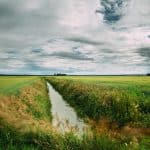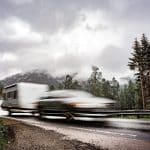As globalisation proliferates, human activities have increasingly infringed upon the habitats of a multitude of wildlife species. Such activities typically manifest in the form of massive construction projects, which inevitably disrupt the natural landscape. One major repercussion of this is the fragmentation of migration corridors, crucial pathways for many species of animals.
To ensure that development and conservation efforts sustainably coexist, best practices need to be adopted when building near wildlife migration corridors. These practices revolve around preserving as much of the natural habitat as possible, providing safe crossing points for animals, and reducing the impacts on the surrounding environment.
Avez-vous vu cela : What Are the Latest Developments in Soundproofing Materials for Urban Housing?
Exploring the Importance of Wildlife Migration Corridors
Before delving into the best practices for building near wildlife migration corridors, it’s vital to comprehend their significance. Wildlife corridors, also known as habitat corridors, are strips of land that allow animals to move from one habitat to another. They are instrumental in the survival and flourishing of many species.
These corridors serve as a lifeline for a plethora of species, from large mammals like elephants and bears to smaller creatures like birds and insects. They provide animals with access to different habitats for food, mating, and shelter.
A lire en complément : How to Approach Real Estate Investments in Coastal Erosion Zones?
The fragmentation of these corridors due to human activity poses a grave threat to wildlife. As habitats shrink and become isolated, animals are forced into smaller areas, leading to an increased competition for resources and a heightened risk of extinction.
Prioritising Conservation in Construction Designs
One effective way to mitigate the impact of construction on wildlife corridors is through the integration of conservation-focused designs. This involves planning and designing structures that minimise damage to the existing landscape.
Construction designs should take into account the topography, vegetation, and other features of the landscape to ensure minimal disruption. For instance, instead of clearing a large patch of forest for a building foundation, consider a design that incorporates the trees and vegetation into the structure or around it.
Moreover, construction materials can also have a significant impact. Where possible, opt for materials that blend in with the natural surroundings. This will not only reduce visual impact but can also help to minimise disturbance to wildlife.
Building Wildlife Crossing Structures
Across the globe, numerous examples of wildlife crossing structures have provided safe passages for animals across human-made barriers. These structures, including wildlife overpasses and underpasses, are engineered solutions that allow animals to safely cross roads and other structures.
Wildlife overpasses, also known as wildlife bridges, are structures that span over roads, railways, or other human-made barriers. These overpasses are typically landscaped to mimic the natural environment, encouraging use by wildlife.
Wildlife underpasses, on the other hand, allow animals to cross under these barriers. They can take the form of culverts, tunnels, or even specially designed ledges along retaining walls.
Both crossing structures have proven effective in reducing wildlife-vehicle collisions and maintaining connectivity among animal populations. When building near wildlife migration corridors, integrating these crossings into construction plans can significantly reduce the impact on animal movement.
Implementing Strict Monitoring and Management Programs
Even with the best construction practices in place, ongoing monitoring and management are essential to ensure the continued protection of wildlife migration corridors. This can involve regular assessments of wildlife movement and behaviour, comprehensive impact studies, and mandatory audits for construction activities.
Monitoring programs can provide valuable data on how effectively the conservation measures are working. With this information, management can make necessary adjustments to improve the functioning of the crossing structures or amend construction practices as required.
It’s also crucial to engage with local communities and stakeholders. Their insight can provide valuable information about local wildlife and can also foster a sense of shared responsibility for conservation.
Mitigating Noise and Light Pollution
Lastly, but by no means least, it’s important to consider the effects of noise and light pollution on wildlife. Many species are sensitive to changes in their environment, and excessive noise or artificial light can disrupt their natural behaviours and stress levels.
During construction, noise levels should be kept to a minimum, and construction activity should ideally be scheduled during periods when it will cause the least disturbance to wildlife.
Similarly, lighting should be carefully managed. Avoid using bright, flashing lights especially during the night. Where lighting is necessary, use low-intensity, downward-facing lights to minimise light pollution.
In sum, building near wildlife migration corridors necessitates a delicate balance between development and conservation. By adopting these best practices, we can strive towards a future where both humans and wildlife can thrive in harmony, without compromising the integrity of our shared planet.
The Crucial Role of Wildlife Crossings in Safeguarding Migration Corridors
Wildlife crossings play a pivotal function in preserving the integrity of wildlife corridors, providing safe pathways for diverse species to traverse human-made barriers. The construction of these crossing structures is an innovative solution to counteract habitat fragmentation. These structures are designed to guide large mammals, small mammals, and other target species safely across roads and railways, thereby reducing the risk of wildlife-vehicle collisions.
There are two primary types of wildlife crossings: wildlife overpasses and wildlife underpasses. Wildlife overpasses, or wildlife bridges, extend over barriers like roads or railways, recreating a semblance of the natural habitat above human-made structures. These overpasses are landscaped with native vegetation and are designed to mimic the surrounding environment, encouraging use by various species.
Meanwhile, wildlife underpasses serve as conduits for animals to traverse underneath barriers. These underpasses may comprise culverts, tunnels, or specially-designed ledges along retaining walls. Whether an overpass or an underpass is built depends on the specific needs of the target species and the features of the local landscape.
For instance, a wildlife overpass might be more suitable in an area with a high population of arboreal species, such as monkeys and squirrels. On the other hand, areas with a large population of small to medium-sized terrestrial mammals might benefit more from wildlife underpasses.
Building these crossing structures near wildlife corridors is a strategic move to maintain habitat connectivity and ensure the safe passage of wildlife. By incorporating these crossings into construction plans, humans can significantly mitigate the adverse impacts of development on wildlife movement.
Long-Term Strategies: Monitoring and Management Programs
Implementing robust monitoring and management programs is crucial for maintaining the efficacy of the measures put in place to protect wildlife corridors. After all, the preservation of these vital passages is a long-term commitment.
These programs should include regular assessments of wildlife movement and behaviour, comprehensive impact studies, and mandatory audits for construction activities. By collecting and analyzing this data, we can gauge the success of the conservation measures in place and make necessary adjustments. For example, if a wildlife crossing is not being used as anticipated, we might need to reassess the design, location, or the target species.
Moreover, successful and effective management of wildlife corridors involves not just construction companies and conservationists but also the local communities. Engaging these communities fosters a sense of shared responsibility for conservation. Local residents can provide valuable observations about the wildlife in the area, and their involvement can encourage greater respect and care for these corridors.
In addition, such programs should also consider the impacts of climate change on wildlife movements. Changes in the environment might alter migration patterns, requiring adjustments to the wildlife corridors and associated infrastructure.
Conclusion: Aim for a Harmonious Co-Existence
Building near wildlife migration corridors necessitates a delicate balance between human development and wildlife conservation. However, by adopting these best practices, it’s possible to achieve this equilibrium, ensuring a future where both mankind and wildlife can thrive.
Mitigating the impacts of construction, integrating wildlife crossings, and implementing rigorous monitoring and management programs are fundamental steps in achieving this balance. Furthermore, being mindful of noise and light pollution, and involving local communities are essential elements of a holistic conservation strategy.
While human infrastructure continues to encroach upon natural habitats, it’s crucial for us to remember that we share this planet with a multitude of other species. It’s our collective responsibility to ensure that our actions don’t compromise their survival. By prioritizing the preservation of wildlife corridors, we can contribute to the longevity of diverse species and the health of our shared ecosystem.






